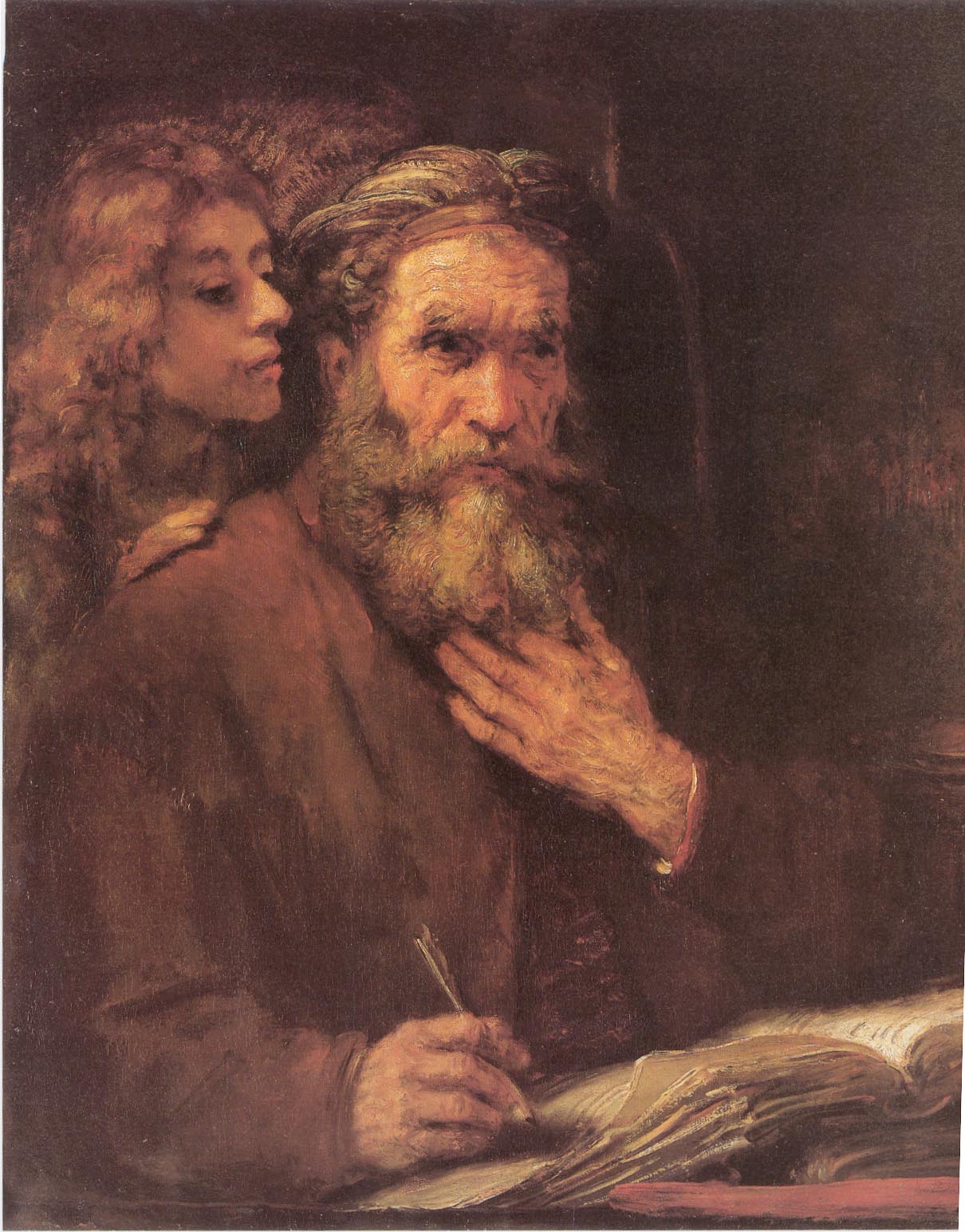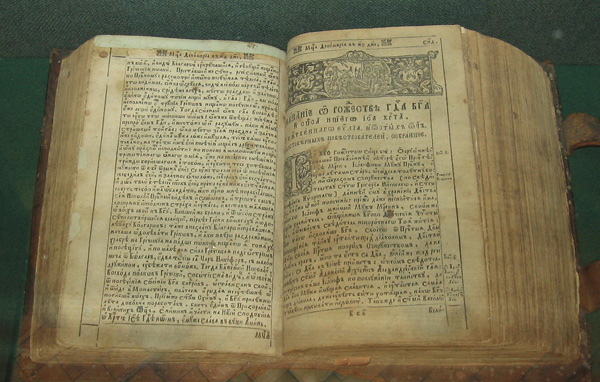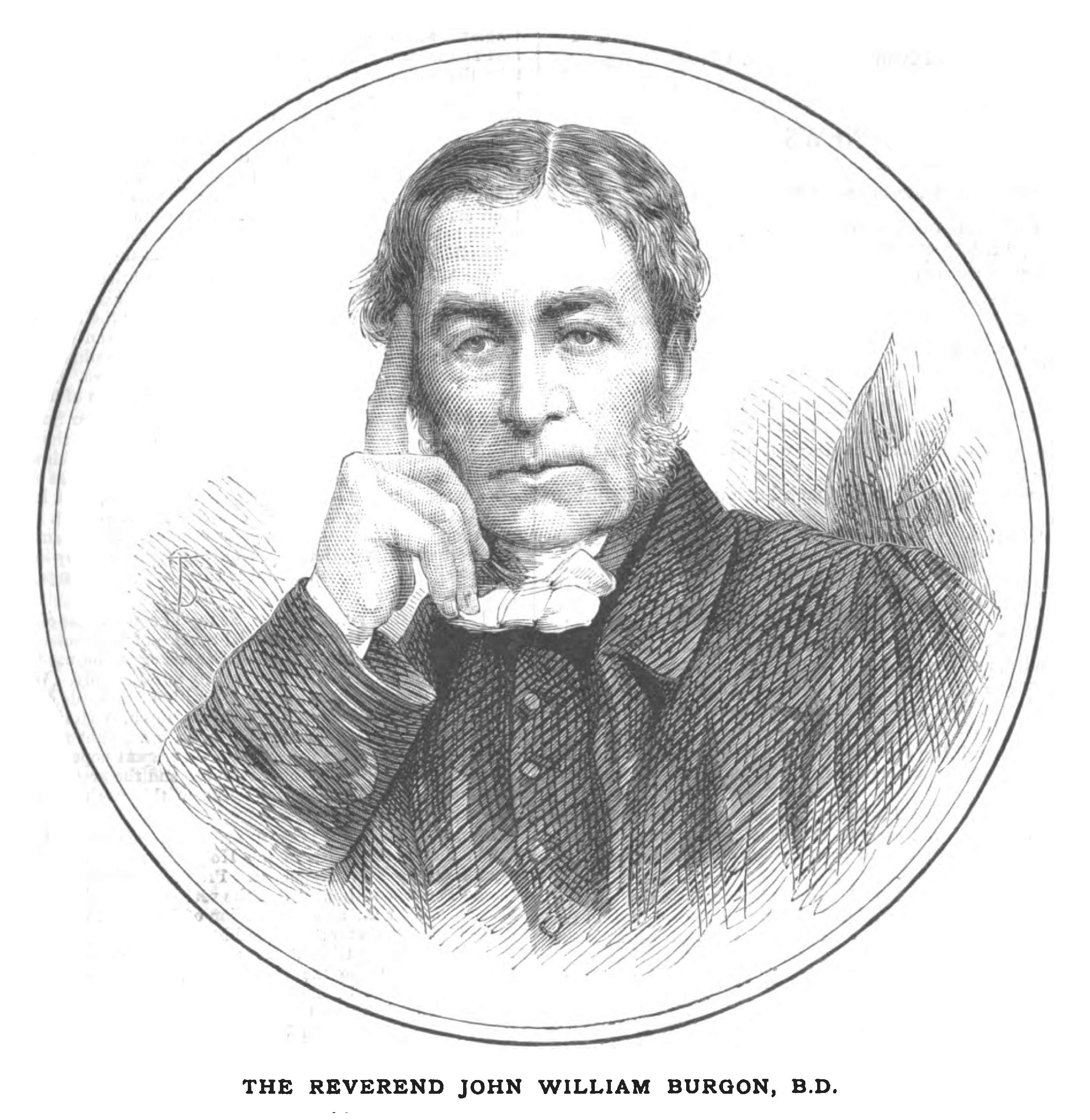|
Minuscule 592
Minuscule 592 (in the Gregory-Aland numbering), α 567 ( von Soden), is a Greek minuscule manuscript of the New Testament, on paper, dated by a Colophon to the year 1289.K. Aland, M. Welte, B. Köster, K. Junack, "Kurzgefasste Liste der griechischen Handschriften des Neues Testaments", ''Walter de Gruyter'', Berlin, New York 1994, p. 81. The manuscript has complex contents. It was labelled by Scrivener as 461. Gregory labelled the manuscript by 592e, 207a, and 263p. Description The codex contains the text of the New Testament except Book of Revelation on 295 paper leaves (size ). It is written in one column per page, 28-32 lines per page. It was written by many hands. It contains the lists of the , numerals of the (''chapters''), the (''titles''), the Ammonian Sections (in Mark 237 – 16:15), (not the Eusebian Canons), Synaxarion, Menologion, subscriptions, , , pictures, and Euthalian Apparatus. The order of books: Catholic epistles, Pauline epistles, Synaxarion, and Gosp ... [...More Info...] [...Related Items...] OR: [Wikipedia] [Google] [Baidu] |
New Testament
The New Testament grc, Ἡ Καινὴ Διαθήκη, transl. ; la, Novum Testamentum. (NT) is the second division of the Christian biblical canon. It discusses the teachings and person of Jesus, as well as events in first-century Christianity. The New Testament's background, the first division of the Christian Bible, is called the Old Testament, which is based primarily upon the Hebrew Bible; together they are regarded as sacred scripture by Christians. The New Testament is a collection of Christian texts originally written in the Koine Greek language, at different times by various authors. While the Old Testament canon varies somewhat between different Christian denominations, the 27-book canon of the New Testament has been almost universally recognized within Christianity since at least Late Antiquity. Thus, in almost all Christian traditions today, the New Testament consists of 27 books: * 4 canonical gospels ( Matthew, Mark, Luke, and John) * The Acts of the ... [...More Info...] [...Related Items...] OR: [Wikipedia] [Google] [Baidu] |
Menologion
Menologium (), also written menology, and menologe, is a service-book used in the Eastern Orthodox Church and those Eastern Catholic Churches which follow the Byzantine Rite. From its derivation from Greek , ''menológion'', from μήν ''mén'' "a month", via Latin '' menologium'', the literal meaning is "month-set"—in other words, a book arranged according to the months. Like a good many other liturgical terms (e.g., lectionary), the word has been used in several quite distinct senses. Definitions ''Menologion'' has several different meanings: * "Menologion" is not infrequently used as synonymous with "Menaion" (pl. ''Menaia''). The Menaia, usually in twelve volumes—one for each month—but sometimes bound in three, form an office-book, which in the Orthodox Church, corresponds roughly to the ''Proprium Sanctorum'' of the Latin Breviary. They include all the propers (variable parts) of the services connected with the commemoration of saints and in particular the can ... [...More Info...] [...Related Items...] OR: [Wikipedia] [Google] [Baidu] |
Textual Criticism
Textual criticism is a branch of textual scholarship, philology, and of literary criticism that is concerned with the identification of textual variants, or different versions, of either manuscripts or of printed books. Such texts may range in dates from the earliest writing in cuneiform, impressed on clay, for example, to multiple unpublished versions of a 21st-century author's work. Historically, scribes who were paid to copy documents may have been literate, but many were simply copyists, mimicking the shapes of letters without necessarily understanding what they meant. This means that unintentional alterations were common when copying manuscripts by hand. Intentional alterations may have been made as well, for example, the censoring of printed work for political, religious or cultural reasons. The objective of the textual critic's work is to provide a better understanding of the creation and historical transmission of the text and its variants. This understanding may lead ... [...More Info...] [...Related Items...] OR: [Wikipedia] [Google] [Baidu] |
List Of New Testament Minuscules
The list of New Testament Minuscules ordered by Gregory-Aland index number is divided into three sections: * List of New Testament minuscules (1–1000) * List of New Testament minuscules (1001–2000) * List of New Testament minuscules (2001–3000) By location and institution List of New Testament Minuscules ordered by location and hosting institution: (*) Indicates only a portion of manuscript held by institution. (**) Indicates manuscript is a forgery. Bold Indicates manuscript has been color photographed. A–F G H–M N–T U–Z See also * List of artifacts significant to the Bible * List of New Testament Church Fathers * List of New Testament Latin manuscripts * List of New Testament lectionaries * List of New Testament amulets *List of New Testament papyri A New Testament papyrus is a copy of a portion of the New Testament made on papyrus. To date, over 140 such papyri are known. In general, they are considered the earliest witnesses to the original ... [...More Info...] [...Related Items...] OR: [Wikipedia] [Google] [Baidu] |
Milan
Milan ( , , Lombard language, Lombard: ; it, Milano ) is a city in northern Italy, capital of Lombardy, and the List of cities in Italy, second-most populous city proper in Italy after Rome. The city proper has a population of about 1.4 million, while its Metropolitan City of Milan, metropolitan city has 3.26 million inhabitants. Its continuously built-up List of urban areas in the European Union, urban area (whose outer suburbs extend well beyond the boundaries of the administrative Metropolitan cities of Italy, metropolitan city and even stretch into the nearby country of Switzerland) is the fourth largest in the EU with 5.27 million inhabitants. According to national sources, the population within the wider Milan metropolitan area (also known as Greater Milan), is estimated between 8.2 million and 12.5 million making it by far the List of metropolitan areas of Italy, largest metropolitan area in Italy and List of metropolitan areas in Europe, one of ... [...More Info...] [...Related Items...] OR: [Wikipedia] [Google] [Baidu] |
Dean Burgon
John William Burgon (21 August 18134 August 1888) was an English Anglican divine who became the Dean of Chichester Cathedral in 1876. He was known during his lifetime for his poetry and his defence of the historicity and Mosaic authorship of Genesis and of biblical infallibility in general. Long after his death he was remembered chiefly for his defense of the traditional text of the New Testament. Biography Burgon was born at Smyrna (now İzmir), on 21 August 1813, the son of Thomas Burgon an English merchant trading in Turkey who was also a skilled numismatist and afterwards became an assistant in the antiquities department of the British Museum. His mother is often said to have been Greek but was in fact the daughter of the Austrian consul at Smyrna and his English wife. During his first year the family moved to London, where he was sent to school. After a few years of business life, working in his father's counting-house, Burgon went to Worcester College, Oxford, in 1 ... [...More Info...] [...Related Items...] OR: [Wikipedia] [Google] [Baidu] |
Family Kx
Family Kx is a large group of the New Testament manuscripts. It belongs to the Byzantine text-type as one of the textual families of this group. It includes uncials, and although hundreds of minuscules, no early ones. Description The group was discovered by Hermann von Soden and designated by him with symbol Kx. The only distinction von Soden made among Kx members was according to the presence and type of the Pericope adulterae. Due to the massive influence of the group on other groups and its lack of control, the boundaries of group remain blurred. The most problematic is the question, how many Kx readings can be missing and how many surplus readings can be added before a manuscript no longer deserves to be classified as Kx? According to the Claremont Profile Method Kx has following profile in Luke 1, 10, and 20 are:The word before the bracket is the reading of the UBS edition; the readings which are not bold are those of the TR. See F. Wisse, ''The Profile Method for the C ... [...More Info...] [...Related Items...] OR: [Wikipedia] [Google] [Baidu] |
Claremont Profile Method
The Claremont Profile Method is a method for classifying ancient manuscripts of the Bible. It was elaborated by Ernest Cadman Colwell and his students. Professor Frederik Wisse attempted to establish an accurate and rapid procedure for the classification of the manuscript evidence of any ancient text with large manuscript attestation, and to present an adequate basis for the selection of balanced representatives of the whole tradition. The work of Wisse is limited only to three chapters in Luke: 1, 10, and 20. Wisse's profiles The word before the bracket is the reading of the UBS edition. The profile of a manuscript is formed by noting the numbers of those test readings where the manuscript agrees with the bold reading. The readings which are not bold are those of the Textus Receptus. Luke 1 * Luke 1:2 (1 reading) — ] * Luke 1:7 (2 reading) — ην η ελισαβετ ] η ελισαβετ ην * Luke 1:7 (3 reading) — η ] omit * Luke 1:8 (4 reading) — ] ενα ... [...More Info...] [...Related Items...] OR: [Wikipedia] [Google] [Baidu] |
William B
William is a masculine given name of Norman French origin.Hanks, Hardcastle and Hodges, ''Oxford Dictionary of First Names'', Oxford University Press, 2nd edition, , p. 276. It became very popular in the English language after the Norman conquest of England in 1066,All Things William"Meaning & Origin of the Name"/ref> and remained so throughout the Middle Ages and into the modern era. It is sometimes abbreviated "Wm." Shortened familiar versions in English include Will, Wills, Willy, Willie, Liam, Bill, and Billy. A common Irish form is Liam. Scottish diminutives include Wull, Willie or Wullie (as in Oor Wullie or the play ''Douglas''). Female forms are Willa, Willemina, Wilma and Wilhelmina. Etymology William is related to the German given name ''Wilhelm''. Both ultimately descend from Proto-Germanic ''*Wiljahelmaz'', with a direct cognate also in the Old Norse name ''Vilhjalmr'' and a West Germanic borrowing into Medieval Latin ''Willelmus''. The Proto-Germa ... [...More Info...] [...Related Items...] OR: [Wikipedia] [Google] [Baidu] |
Categories Of New Testament Manuscripts
New Testament manuscripts in Greek are categorized into five groups, according to a scheme introduced in 1981 by Kurt Kurt is a male given name of Germanic or Turkish origin. ''Kurt'' or ''Curt'' originated as short forms of the Germanic Conrad, depending on geographical usage, with meanings including counselor or advisor. In Turkish, Kurt means "Wolf" and is ... and Barbara Aland in ''The Text of the New Testament''. The categories are based on how each manuscript relates to the various text-types. Generally speaking, earlier Alexandrian manuscripts are category I, while later Byzantine manuscripts are category V. Aland's method involved considering 1000 passages where the Byzantine text differs from non-Byzantine text. The Alands did not select their 1000 readings from all of the NT books; for example, none were drawn from Matthew and Luke. Description of categories The Alands' categories do not simply correspond to the text-types; all they do is demonstrate the 'B ... [...More Info...] [...Related Items...] OR: [Wikipedia] [Google] [Baidu] |
Kurt Aland
Kurt Aland (28 March 1915 – 13 April 1994) was a German theologian and biblical scholar who specialized in New Testament textual criticism. He founded the ''Institut für neutestamentliche Textforschung'' (Institute for New Testament Textual Research) in Münster and served as its first director from 1959 to 1983. He was one of the principal editors of '' Nestle–Aland – Novum Testamentum Graece'' for the Deutsche Bibelgesellschaft and '' The Greek New Testament'' for the United Bible Societies. Life Aland was born in Berlin- Steglitz. He started studying theology in 1933 at the Friedrich-Wilhelms-Universität in Berlin (he also studied philology, archaeology, and history). On 23 March that year, he was examined before the ''Bruderrat'' (council of brothers) in the '' Bekennende Kirche'' (Confessing Church). During his studies, he worked for the journal of the Confessing Church, ''Junge Kirche'' (Young Church). In an ideological brochure, ''Wer fälscht?'' (Who is lyi ... [...More Info...] [...Related Items...] OR: [Wikipedia] [Google] [Baidu] |
Euthalian Apparatus
The Euthalian Apparatus is a collection of additional editorial material, such as divisions of text, lists, and summaries, to the New Testament's Book of Acts, Catholic epistles, and Pauline epistles. This additional material appears at the beginnings of books, in the margin of the text, and at the ends of books, as well as in line and paragraph separations. This material is traditionally associated with the name of Euthalius. Description Euthalius divided the text of the Acts and catholic epistles into chapters, with a summary of contents at the top of each chapter. To Euthalius were also referred a division of the Acts into 16 (''lessons'') and of the Pauline epistles into 31 sections. But these lessons are quite different. Euthalius prepared also the text of the Acts and Epistles in which text is written stichometrically.Robert Waltz''Euthalian Apparatus'', in: ''Encyclopedia of Textual Criticism''/ref> To the Euthalian Apparatus belong: a chronology of the Apostle Paul, th ... [...More Info...] [...Related Items...] OR: [Wikipedia] [Google] [Baidu] |






